Forgotten Audio Formats: MP3
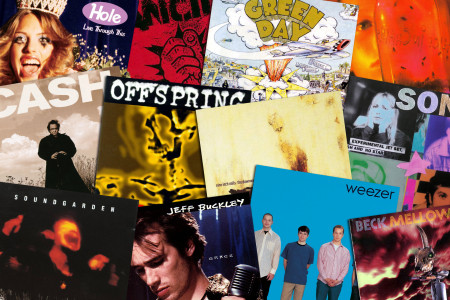
The year was 1994. Music was as popular as it’s ever been, with rock bands like Nirvana and The Smashing Pumpkins, popstars such as Ace of Base and Mariah Carey, and even soul artists like Boyz II Men and Janet Jackson selling millions of albums.
Future hip-hop icons like Dr. Dre & Tupac were working the clubs and the charts. All music was purchased on CD, Cassette, or vinyl and taken home.
The music industry was relatively healthy and investing in new artists.
Thousands of people were employed to record, catalog, distribute, market, and keep the books for successful recording artists. These used to be coveted jobs!
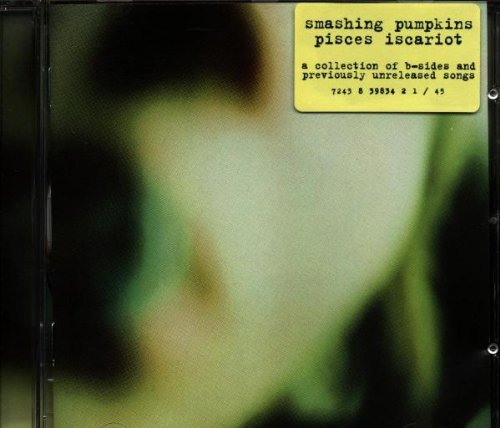
Music could be consumed on multiple formats. The only thing that could stream to you was AM/FM radio.
FM music radio was not yet completely dead. Some cities still had banging music stations in the 90’s.
Most fans had a mixed bag for their own music collection: analog vinyl and cassettes along with digital CD’s.
Other physical formats existed, such as reel-to-reel and LaserDisc, but these were tiny markets. DAT and DSD were still years away.
File-only digital music had just begun with the WAV/AIFF format, released in 1991, but a single CD held more data than most hard drives in 1994.
Digital storage was too small and expensive to hold much audio or video data.
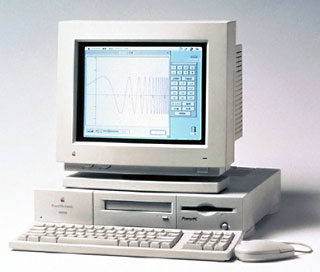
In the tech world a trend was accelerating that would forever change the music industry:
The key here is hard drive price per megabyte:
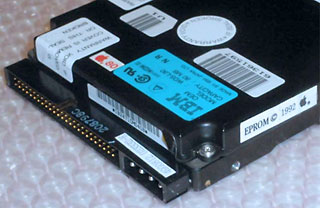
1988 – $16
1989 – $12
1990 – $9
1991 – $7
1992 – $4
1992 – $2
1993 – $0.95
1994 – $0.81
1995 – $0.68
1996 – $0.21
In 1988 you would need $10,000 worth of hard drive space to hold a single CD!
By 1994 it was $526. By 1996 $135 got you 650mb of HD space. You could put that 650mb on a CD for about $0.25.
No matter how fast HD prices dropped, hard drives would not compete with CD storage for many years. Projections showed 15-20 more years before a hard drive would achieve the same cost per megabyte as early CD’s. More on that below.
The 650mb Compact Disc cost pennies to manufacture and sold at retail for $15-30. Nice markup if you can get it!
Plus they were proving to be durable. With CD-R’s coming down in price CD was the digital format of necessity unless and until something drastically changed.
Either the bandwidth needed or bandwidth available had to change for digital file music to take off.
Don’t forget: bandwidth = moving storage, and storage = static bandwidth.
The same software engineers who came up with JPG image compression were called upon to investigate audio and video compression. Their goal: to get the file size small enough for early 90’s bandwidth. If a CD cost $20, how to compete?
Shrink the file by any means necessary.
Take the primary promise of digital — bit matching outputs to inputs, and throw it away. Lose it. Lose data.
From the beginning, the goal was to restrict file sizes as radically as possible.
For music testing they used contemporary music (Suzanne Vega) and developed what they called perceptual coding.
Perceptual coding is a form of audio data compression that targets the parts of mixed music that are open to perception beyond the main focus of the song, which is the melody and the beat.
Other things like transients,
decays,
pan and placement of sounds,
room shape,
soundstage size,
the timbre of instruments,
the blending of sounds,
…those types of things – were considered expendable because they were hard to quantify and perceptions of them varied.
We can’t scientifically describe a tone or a timbre of an instrument or voice, but you are damn sure we can feel it.
Perceptual coding attacked the mix and the sound qualities of instruments to remove data, trying to leave the noise floor and core loud rhythmic and melodica passages alone.

These audible cues, transients, and timbres are always present in mixed music but are unmeasurable and basically indescribable.
We can’t scientifically describe a tone or a timbre of an instrument or voice, but you are damn sure we can feel it.
Actually, people can describe them all day and night but they are nearly impossible to measure and no one even agrees how to explain verbally or through written language.
You may know it when you hear it, but it’s not possible to explain further in a controlled, consistent, scientific way. No matter how descriptive you are… the next person will use completely different terms.
This led to listener confusion and lack of terminology.
This made the engineers job far easier.
They found that they could actually remove nearly 90% of the audio data before testers consistently identified a difference.
This listener confusion and flawed testing method was not researched further.
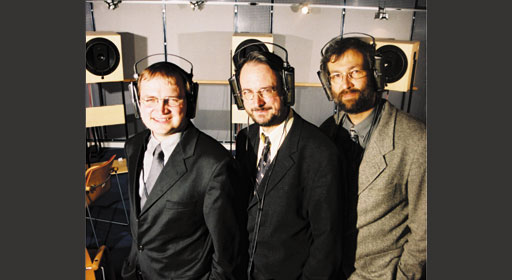
This gave the engineers the green light they needed. Their perceptual coding was close enough to fool enough people and the MP3 specification was published. Engineering test passed, pay up please.
A 50 mb WAV file became a 5 mb MP3 file and life was good!
It was kinda true – at first listen, they almost sounded like the original. Oh yeah it didn’t take as much space! Space was much more precious back then.
It took a more critical listen, and especially repeated listens, to pick out the degradation in the audio file. Like empty calories for the ears, it was missing protein, especially on better systems.
Over time many came to hate the MP3 sound. Casual listeners didn’t seem to care as much, but professionals, musicians, and audiophile-types rejected MP3 as lossy.
Sound quality has always been secondary in the marketplace, though.
Finally computers could play near-full quality music!
File-based convenience had arrived.
Finally modems and networks could send the files around!
Finally bootlegging was convenient!
MP3 was quite popular in it’s time.
Nearly every device made could play MP3 files, including phone’s, video games, TV’s, and wireless speakers.
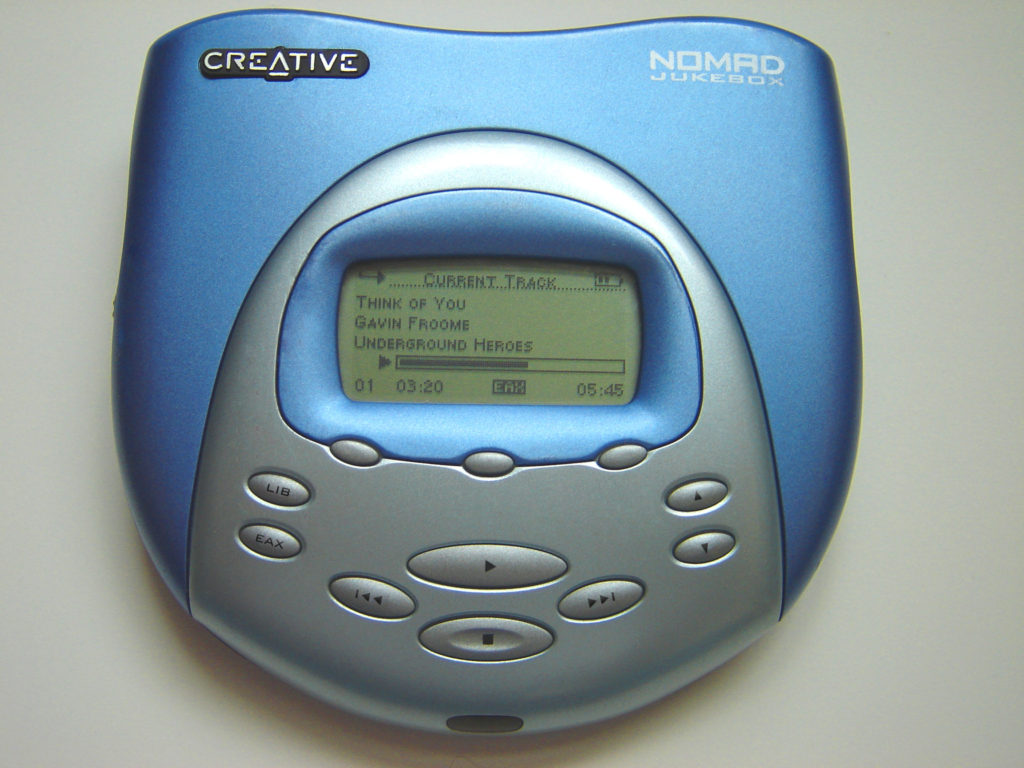
Apple, Amazon, and Google made good money selling MP3 files. Nearly every artist and label agreed to lossy their catalog for profit. DIY sites like Bandcamp and ReverbNation allowed indie bands to publish in this new age.
But MP3 had no artwork beyond a tiny cover. No lyrics. No credits. No booklet. No shout outs. Nothing but database tags.
There was nothing physical to attach to. Nothing to put on your shelf and notice. Nothing to color your life. Listeners ended up attached to their iPod or phone instead, and not necessarily the content on it.
MP3 was highly bootlegged and for some time, recorded music lost all value.
MP3 also required almost no people to distribute or sell it to the masses. Nothing to sell & nothing to move = nothing to promote. This equals nothing to invest in.
Bootlegging ran rampant and the music industry practically folded. Most musicians stopped making money from their music.
Limping along, MP3 got one quality and brand upgrade in 2009 with the AAC format by Apple (AAC = Apple’s proprietary MP4), but it wasn’t going to help much. By 2014 streaming was stealing the download market.
Streaming takes everything bad about MP3’s and extends it to the rental model. *Update* At least Amazon is now streaming in lossless and 24bit, when available.
Now you own nothing, not even the 10% files! You instead pay a monthly subscription to hear degraded versions of your favorite songs in-between inane commercials. You rent crappy copies of music and the artist barely gets compensated.
Don’t pay up? No music for you.
Related: Streaming’s Shortcomings
Let’s check back in with hard drive prices. Did they ever get close to CD’s for price per MB?
1996 – $0.21
…
2005 – $0.0005
2006 – $0.0003
2007 – $0.0002
2008 – $0.00018
2009 – $0.00008
2010 – $0.00005
2011 – $0.00004
2012 – $0.00006
2013 – $0.000044
2014 – $0.000035
2015 – $0.00003
2016 – $0.000029
2017 – $0.000027
2018 – $0.0000245
1 CD of music is usually less than 500mb. It looks like around 2011 it finally cost $0.02 to store a CD on hard drive space. (I’m sure CD’s are cheaper than 2 cents now but that was the common average price per disc in the early 90’s when mp3 was developed.)
The current streaming business model is unsustainable for both the license holders and the license purchasers, but in this post-fact world perhaps it really doesn’t matter.
Sound quality has been trumped. I’ve been wrong before.
Lossless formats like FLAC, around for over a decade now, gives critical listeners an open format to rally around. Buying hi-res music from sites like HDTracks and ProStudioMasters is a thing again.
Hi-res hi-fi DAP’s finally emerged in many markets. 24bit FLAC continues to offer higher-resolution files with no DRM.

Bandwidth/storage is now, finally, available for accurate digital music storage and transmission.
The hi-res audio future has arrived, if we want it.
I have 60+ full lossless albums on a card the size of my pinky nail. I have 5 of those cards in a case the size of a credit card. 300 lossless albums on a credit card, not bad.
I have the bandwidth into the house and into my phone hotspot to stream 24bit audio, if anyone offered it. (Tidal streams lossless, but no-one streams hi-res adio yet)
One can only hope that the MP3 era is the last time we accept such a massive downgrade in quality to our most important human resource, music.